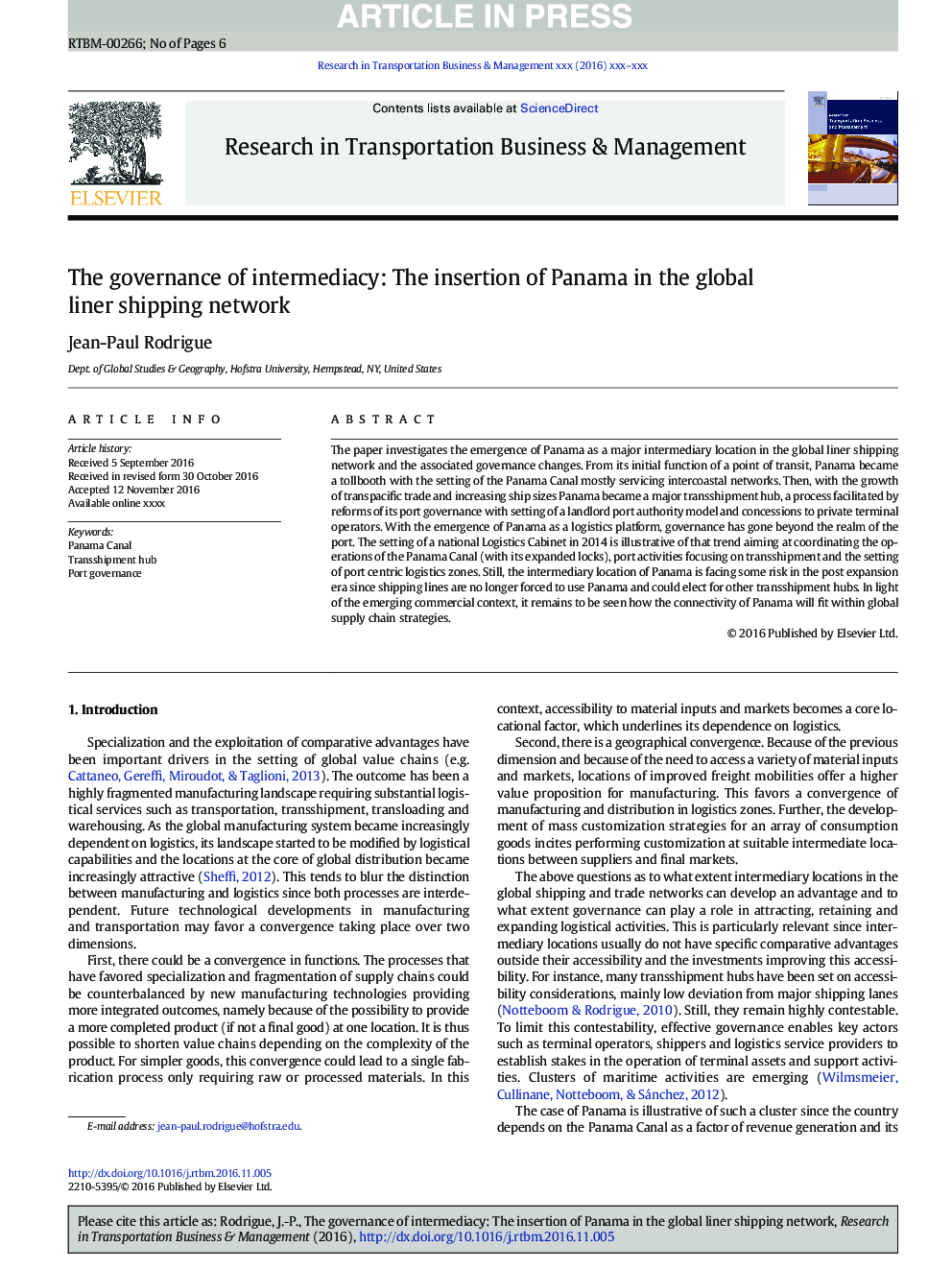| Article ID | Journal | Published Year | Pages | File Type |
|---|---|---|---|---|
| 5106668 | Research in Transportation Business & Management | 2017 | 6 Pages |
Abstract
The paper investigates the emergence of Panama as a major intermediary location in the global liner shipping network and the associated governance changes. From its initial function of a point of transit, Panama became a tollbooth with the setting of the Panama Canal mostly servicing intercoastal networks. Then, with the growth of transpacific trade and increasing ship sizes Panama became a major transshipment hub, a process facilitated by reforms of its port governance with setting of a landlord port authority model and concessions to private terminal operators. With the emergence of Panama as a logistics platform, governance has gone beyond the realm of the port. The setting of a national Logistics Cabinet in 2014 is illustrative of that trend aiming at coordinating the operations of the Panama Canal (with its expanded locks), port activities focusing on transshipment and the setting of port centric logistics zones. Still, the intermediary location of Panama is facing some risk in the post expansion era since shipping lines are no longer forced to use Panama and could elect for other transshipment hubs. In light of the emerging commercial context, it remains to be seen how the connectivity of Panama will fit within global supply chain strategies.
Keywords
Related Topics
Social Sciences and Humanities
Business, Management and Accounting
Business and International Management
Authors
Jean-Paul Rodrigue,
